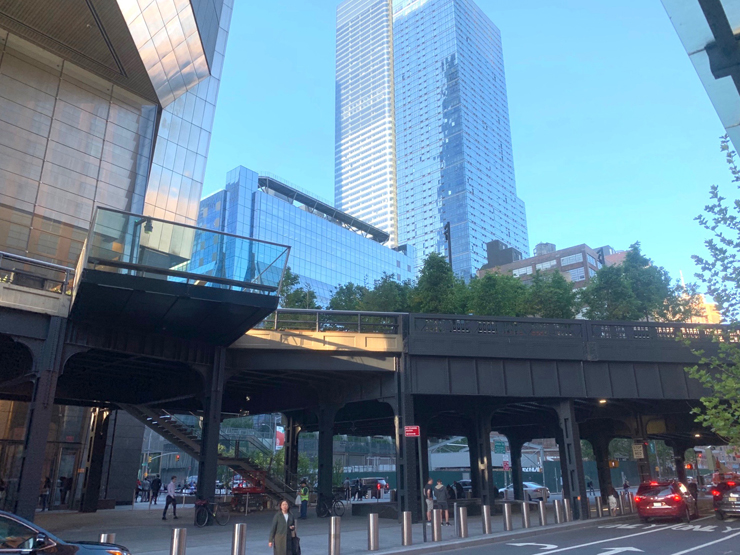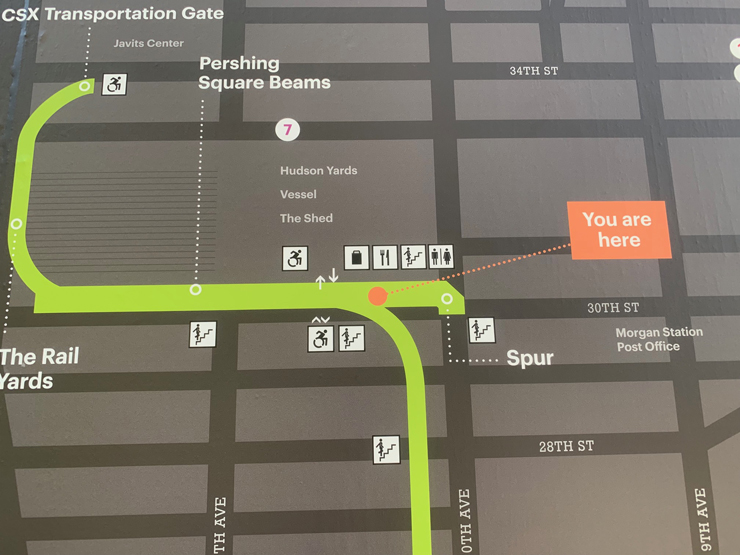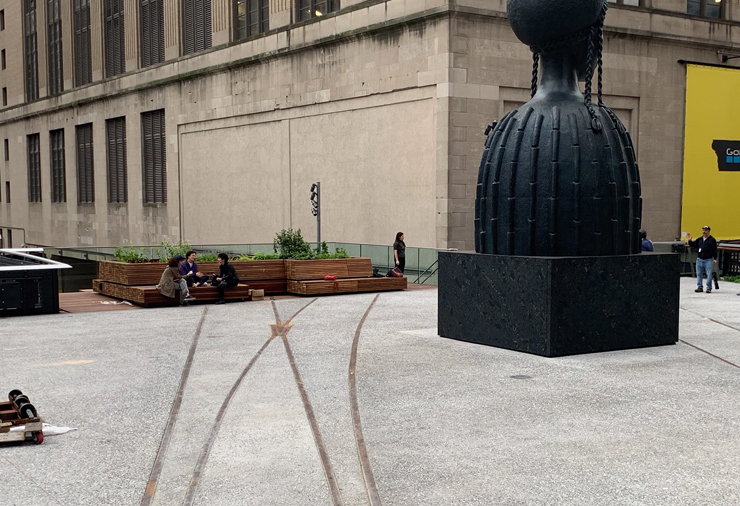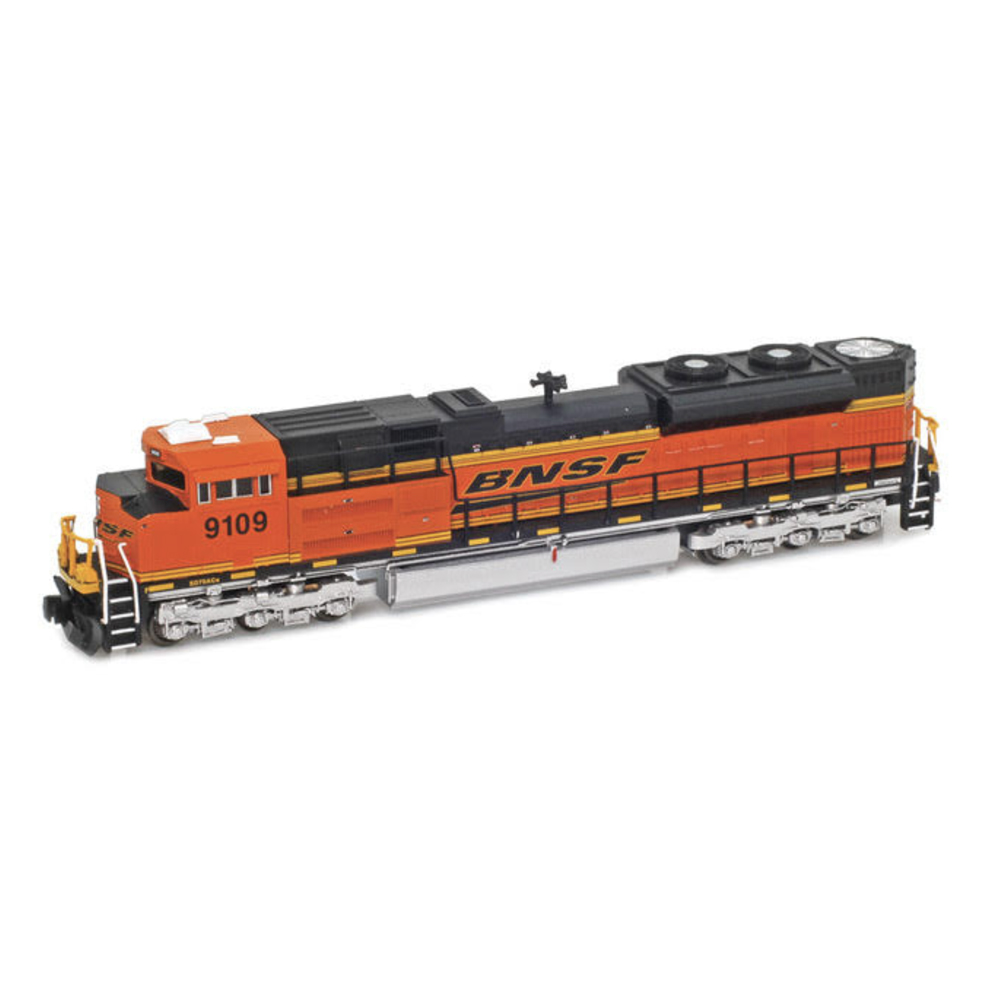NEW YORK — The final piece of the High Line park, the 500-foot-long Spur, is scheduled to open today just ahead of the 10th anniversary of the opening of the first section of the 1.5-mile linear park built on a former elevated railway structure.
The extension will be the last of four sections of the park built on a structure that opened in 1934 to take rail freight from adjacent motor traffic-laden streets, after children died in train-related accidents. The park, the first section of which opened on June 9, 2009, combines gardens, art pieces, performance spaces and Hudson River views on an intact, embedded railroad line, ready to be re-awakened should the need arise.
The final revenue Conrail freight on the former West Side Line south of 34th Street was in April of 1980, an engine and three carloads of turkeys. Why did the whole section remain available for preservation or gentrification?
Thrift.
Robert Hammond, co-founder and executive director of Friends of the High Line, the organization that oversees the park, and co-founder Joshua David met at a community meeting and devised the idea to save the structure in August of 1999, after a previous attempt by Peter Obletz which started 16 years earlier.
“After Josh and I devised the project,” Hammond told Trains News Wire, “we went on a tour given by a then-owner CSX representative to enhance future non-rail line development. She explained that structural demolition would cost between $7 and $30 million, CSX wanted someone else do something with it and avoid the expense. We were both drawn to the differences that existed — It was above the ground, abandoned, it offered a lush plant life in a gritty industrial context; on top it was light and airy; at street level, it was dark. The contrast amazed us.”
Planning started later that year. In 2005, the Surface Transportation Board gave assent to decommissioning rail operations on the structure. After the first section opened in 2009, subsequent portions opened in 2012 and 2014, providing a walkway along the former right-of-way. The High Line was donated by CSX to City of New York, and is under the jurisdiction of the city’s Department of Parks & Recreation. It is jointly operated by the city and the Friends of the High Line, and expects to see more than 9 million visitors this year.
The new section, the Spur, will feature a wide space over 10th Avenue nearly the newly opened Hudson Yards with trees and flowers, rest rooms, a seating area, and food vendors. Rails embedded in the concrete will remind visitors of its former purpose — and reflects a condition of CSX’s donation: that the entire rail structure should revert back to a working rail line if needed with an easement in place. The structure could be linked to the Amtrak Empire Corridor at the north end if need arose. Removal and reinstallation of the embedded rail line was a public-private effort, with costs shared by the city and Friends of the High Line.
The Spur was built to service the Morgan Post Office, a bulk mail facility built in 1933 to provide for more than 8,000 mail trains a year. As late as 1964, up to four mail trains a day were scheduled in and out of the facility. The post office was almost destroyed in a December 1967 fire that incinerated eight mail-carrying cars inside; by the time it reopened in 1979, the sidings into the building had been permanently blocked off.
Its preservation was not always certain. Related Companies, which developed the recently opened Hudson Yards [see “New York marks opening of development over West Side rail yard,” Trains News Wire, March 18, 2019] originally offered a 2008 plan hat did not include the High Line’s Spur. That plan was withdrawn shortly thereafter by supporters who demonstrated that the High Line was a public resource.

















I was in New York at the end of September last year and walked the entire route from the south end to the north end and then back again. It is really a must to see even if it isn’t an active rail line. The problem is the crowds of people using it. It is very frustrating to try and enjoy the park when people are standing 4 abreast and not moving and won’t move aside so others can pass by. My suggestion is to go early in the day (before 10:00 AM) on a weekend or on a weekday in order to enjoy it. As far as learning the history of the line, the park offers free walking tours of the line given by volunteer docents that start near the southern end of the line. But they too get stuck in the jams of people trying to enjoy the park. Reservations for the tours are not taken but get there early on the weekends because they do limit the number of people in each tour and the number of tours.
As much as I wouldhave liked to see this right of way become an opportunity to expand much needed transit to the far West Side such as a light rail line or a bus way or even an extension of the 7 Flushing line down to Battery Park City at least it didn’t go to waste or rot away such as what happened to the abandoned Rockaway branch of the LIRR in Queens or the abandoned North Shore line in Staten Island (although there are proposals and a study was made on the feasibility of the this line becoming either a light rail line or bus way (BRT) ) in both of these cases the NIMBYs are waging a great battle to see nothing developed or come to a reality. They would rather prefer to see rusting rotting and overgrown weed and tree choked eyesores instead of something that benefits everybody. The folks in Manhattan and the West Side at least saw things differently and as a result we have a beautiful park, some much needed green space and it benefits everybody. The High Line is serving a new purpose and the designers even managed to preserve some of the line’s history and heritage as well for future generations to enjoy. However the Rockaway line in Queens will never see that and maybe something will come out of the North Shore Line on Staten Island but the odds of that happening are very slim. NIMBYS of Queens and Staten Island Enjoy looking at a rusted decaying rotting right of way that is an eyesore and a disaster waiting to happen with crumbling and rotting overpasses, signal bridges and towers waiting to fall down on people and traffic with tragic results. and its all because unlike your counterparts in Manhattan you don’t want anything to be developed for the greater good of your fellow residents and citizens but your narrow minded and selfish ways and agenda must prevail
New York Central’s real estate value today?
Could CSX have developed that property?
Jeffery: in 1964, per N.Y. Central Employees Timetable# 15A, dated July 1, 1964, there were up to 4 mail trains a day (it varied with the day of the week), still impressive; by that time trucks for mail were coming into wider use.The Morgan Post Office handled bulk mail, packages, and magazines: there was no first class mail at that location.
An excellent park. A must see when in Manhattan.
8000 mail trains per year divided by 365 is only 22 trains per day. In and out counts as 2, so that’s only 11 trains per day (in and out). That actually seems a bit low for NYC.
I’m sure those numbers are for mail cars, not mail trains.
Doesn’t anyone who knows something about trains read these posts?
“An excellent park. A must see when in Manhattan.”
I agree, having had the pleasure of walking the original section while staying at the La Quinta on 32nd St. just west of 5Av* on a spring Sunday afternoon six years ago. I had lots of company (the Knicks in a playoff game at MSG helped liven up the north end) and was intrigued by the flora and structures along the way. I just wish there’d been signs (unless I missed them) along the way explaining the RR history of the HL, not just the flora lining it.
*I’d taken AMTK up from WIL earlier that day; I forget which train number or arrival time at NYP.
test
John Privara,
It’s quite possible that on some days(like a Sunday) there might have only been one move in and out of the facility…so averaging 22 trains per day is quite reasonable. That’s actually 11 inbound trains and 11 outbound, but I highly doubt that a bulk mail facility actually sent out more mail trains than it took in(though it depends on the location, some will see almost no outbound bulk mail trains and some will see almost all inbound bulk mail trains).